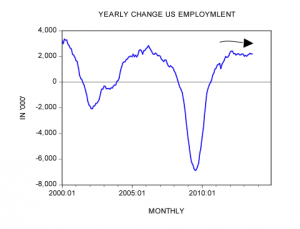John Hathaway is a senior managing director and portfolio manager at Tocqueville Asset Management, specialising in the Tocqueville Gold Fund. Mr Hathaway recently wrote an excellent piece called The Committee to Save the World, which starts with an examination of a Time Magazine article cover, from ten years ago, upon which Alan Greenspan, Robert Rubin, and Lawrence Summers strut with the magnificence of gilded peacocks.
Back then, government men like these apparently knew how to direct the world’s finances, and such colossi used emerald wands to gain secret access to privileged information that remained unknowable to anyone else. All the rest of us had to do was to trust in these government-appointed financial wizards, behind their rippling green silk curtains, and if we did so, whispering “I believe” behind our hands, then all would be well for the future of humanity.
Fortunately these days, such hubris has rapidly evaporated, in a world in which Mervyn King and Ben Bernanke are both publicly panicking, like boiling frogs, with their recent pronouncements that they are clueless about what is going on, that they have failed with quantitative counterfeiting, and that they have little idea what to do next except to pray for a miracle and to roll the printing presses ever harder.
Eric King interviews John Hathaway about his article, below:
A synopsis of the interview follows:
Hathaway believes the government-appointed economic dream teams of 1999-2007 have lost virtually all of their credibility and will not get it back. However, there is still a large political dimension to governmental monetary policy over the next few years and there is much more to it than simply working out whether we will have inflation or deflation.
The current political landscape is predisposed to maintain a status quo of big government and large transfer payments from private industry to the public sector. With so many western democracy citizens dependent upon government jobs and transfer payments, and with so many of these people able to vote for more of the same, this political landscape will be difficult to unwind, especially in the short-term.
Hathaway predicts, at least for the US, that high government spending levels will continue, funded via deficits and government currency printing. Consequently, it is essential that if Americans possess any liquid assets, then at least some of these assets must be invested in gold.
Eric King then asked Hathaway about his thoughts on the latest pronouncements from the Bank for International Settlements (BIS), the central bankers’ bank, on the current state of the world’s finances.
Hathaway regards these comments as sobering and without histrionics. However, given the sobriety of the BIS, their recent comments can by interpreted as displaying alarm and concern within the central banking community. For example:
The window of opportunity to put in place fully fledged macroprudential frameworks should not be missed. Meeting this challenge calls for a finely balanced blend of boldness and realism.
Claudio Borio, Head of the Research and Policy Analysis, Monetary and Economic Department, Bank for International Settlements, 22nd July, 2010
King then asked Hathaway about the recent correction in the gold market, which Pierre Lassonde thinks will reverse sometime from September onwards.
Hathaway thinks there was a crescendo in the gold price in late spring, when the Euro got trashed, and gold benefited with its ‘safe haven’ status. However, every long-term bull market has pauses, pullbacks, and corrections, and this gold bull run will be no exception.
Although Hathaway thinks that sudden quantitative easing moves by the Federal Reserve make everything difficult to predict in a volatile environment, the markets will wait until November to see what the US electorate wishes for in the US mid-term elections. Assuming that these elections retain the status quo of big-spending stimulus-based politicians, and that there is no sea-change in thinking, then gold will begin its next leg up against the falling Dollar at that point.
The psychology of the market is healthy for gold, because with lots of cashed-in former gold bulls wanting the gold price to go down to prove themselves right, there is little bubble-popping euphoria in the gold market. Although the price has come down from its high, it hasn’t collapsed, and is still hovering under the record high and holding station.
With the uncharted waters of a stagnating US economy, high unemployment, unprecedented paper money stimulus, and college students unable to get jobs, Hathaway predicts that the political atmosphere is highly volatile, which is highly positive for gold, and that we could even be in the end game for paper currency.
We live in a non-linear world, says Hathaway, and everything is difficult to predict precisely. However, it is now rational to talk about the possibility of hyperinflation, whereas a decade ago, when the original Time Magazine article came out, talk of future hyperinflation would have seemed bizarre and outlandish.
The world is now different, says Hathaway.
To change for the better, governments have to cut their involvement in the economy and for this to happen electorates have to demand fiscal responsibility from their politicians. However, this scenario is not on any horizon Hathaway can see from where he sits in America. Also, the government-appointed ‘Committees to Save the World’ within central banks want to save their jobs and their reputations, and Hathaway sees no limit as to what they will risk to achieve this.
The recipe is therefore baked into the cake.
When we compare the infinite modern paper scrip to the finite ancient gold relic, the Dollar price for gold has only one direction.
Up.

